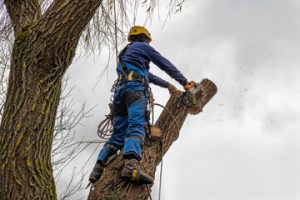
Concrete is an incredibly durable, strong, and versatile construction material that forms the backbone of many buildings and infrastructure worldwide. GK Construction Solutions showcases these advantages. They provide homeowners with concrete construction that delivers lasting strength, value, and performance for their new homes.
Concrete is a composite material composed of cement, water, sand and aggregate. Proper mix design and curing optimizes concrete properties for longevity, saving building owners maintenance costs over their 75-100+ year lifespans.
Durability
The durability of concrete makes it a highly sought-after material for building structures, including homes. It resists the damage from natural disasters, such as fires, earthquakes and hurricane-force winds. It requires minimal maintenance, sparing homeowners from frequent treatments and protective coatings needed for other materials like wood. It is also water-resistant, protecting the home from moisture that can cause mold, wood rot and invasive pests.
During production, concrete requires less energy than other construction materials to prepare and set. This energy efficiency contributes to a lower carbon footprint, and its insulating properties help conserve energy by maintaining consistent indoor temperatures year-round. Homeowners can save on heating and cooling costs, resulting in long-term financial savings.
Concrete is also versatile, allowing architects and builders to incorporate more intricate designs into their structures than would be possible with other materials. This flexibility extends to the form and texture of concrete, making it ideal for modern design trends. The malleable nature of concrete before setting allows designers to shape and finish the product into an array of textures, ensuring that the final home is unique and customized for its residents.
When properly engineered, reinforced, cured and maintained, concrete displays impressive longevity and durability. Achieving these qualities is possible by following best practices to minimize porosity vulnerabilities, improve mix designs and control curing conditions. These measures will result in superior performance, saving owners maintenance fees and improving longevity outlooks over 75-100+ year lifespans.
In addition, the cost of concrete is more stable than framing lumber, reducing long-term budget planning concerns. This stability reduces the risk of unexpected expenses and provides the peace of mind that comes with knowing your home is a smart investment.
Strength
Concrete is a sturdy and durable building material that can withstand weather conditions and other hazards. It’s also a good choice for high-traffic and load-bearing structures. It doesn’t swell, warp or suffer termite damage, and is resistant to fire and abrasion. Concrete can stand up to even the most extreme conditions, so homeowners can rest assured their homes will be safe and sound in any situation.
Concrete construction offers homeowners many benefits in terms of safety, energy efficiency, and sustainability. Combined with innovative insulation techniques and ICF technology, concrete construction provides homes that are disaster-proof and able to withstand the challenges of modern life.
Aside from its durability, concrete is a very cost-effective option for homes. Unlike framing lumber, the cost of concrete is relatively stable, which makes it easier to budget for future renovations or upgrades. Additionally, concrete doesn’t require much maintenance after the home is built. Concrete is mold-resistant and doesn’t emit volatile organic compounds, which means it’s safer for occupants and won’t promote the growth of bacteria or mildew.
Another benefit of concrete is its impeccable soundproofing properties. Compared to buildings made from wood and steel, concrete can keep out external noise by as much as two-thirds. This allows occupants to enjoy a quieter, more comfortable home environment.
Finally, concrete is one of the most sustainable building materials available. Its ability to store thermal energy reduces the need for extensive heating and cooling, saving builders money and reducing their carbon footprint. In addition, concrete is recyclable and can be crushed to reuse in other construction projects. The concrete industry is committed to a “whole-life performance” approach, which ensures all impacts from raw material extraction, manufacturing, construction, use, and end-of-life disposal or reuse are taken into account when evaluating a project’s environmental impact.
Lifespan
Concrete structures benefit from long lifespans, with the potential to last for decades and even centuries when they’re properly designed, built, maintained and reinforced. The longevity of concrete is largely due to its non-biodegradable nature, which makes it resistant to natural elements that would damage and weaken other materials such as wood.
The durability of concrete also provides protection against natural disasters like fire, severe weather and break-ins. This added safety and security can lead to reduced homeowner’s insurance premiums, saving homeowners money on their monthly costs.
Concrete is a non-combustible material, which protects homes against fire damage and halts flames from spreading to other areas of the house. This is important because a home fire can cause significant property loss, leading to extensive repairs or even a complete rebuild. Additionally, concrete resists high temperatures and erodes less quickly than other materials. This feature can save families a lot of money after a devastating event, while ensuring the integrity of their home.
A concrete home’s durable structure means it can withstand high winds from tornadoes or hurricanes. This helps to reduce the risk of damage and injury, as well as decreases energy costs for homeowners who choose to stay in their homes during these extreme conditions.
A concrete home requires less maintenance compared to other materials, such as wood or pavers. This means that homeowners can save time and money on regular upkeep tasks, such as weeding, resealing or replacing worn or damaged surfaces. Additionally, a concrete patio or walkway can last for decades with only regular cleaning and occasional sealing, which saves on expensive landscaping costs. Aside from the initial cost savings, homeowners can also save on utility bills thanks to concrete’s thermal mass properties, which help regulate indoor temperature and lower energy usage.
Energy Efficiency
Concrete is a versatile building material that adapts to modern architectural trends and provides durability in a range of climate conditions. It’s a good choice for homeowners in Long Island, Brooklyn and Queens who want to take advantage of the many benefits offered by this future-proof material.
Among the most important features of concrete construction is its energy efficiency. Concrete’s thermal mass helps regulate indoor temperatures, reducing the need for excessive heating or air conditioning use. The material can also be incorporated with insulation, further lowering energy consumption. These factors help lower utility bills, which can significantly reduce home maintenance costs.
The material’s fire-resistant qualities offer additional protection against common causes of damage to homes. This is particularly important in regions that experience natural disasters, such as wildfires and hurricanes. Many insurance companies offer reduced premiums for houses made with concrete construction.
Although steel and brick offer some of the same advantages as concrete, these materials aren’t as efficient. Steel is a poor conductor of heat and cold, so it requires more energy for climate control, while brick is prone to cracking, requiring frequent repairs. Concrete, on the other hand, resists heat and moisture, making it a more effective building material for areas with fluctuating weather conditions.
In addition to its long lifespan, concrete reduces waste by limiting the frequency of demolition and replacement, which helps minimize environmental impact. Its versatility also means that the material can be sourced from local, recycled materials, contributing to sustainable building practices. Moreover, concrete is often poured on site, which reduces the amount of material that must be transported and stored before being used in construction. This shortened supply chain reduces energy use and greenhouse gas emissions from the manufacturing process.
Environmentally Friendly
Concrete is one of the oldest man-made building materials, dating back over 8,000 years. Compared to other construction materials, it has a lower carbon footprint during production and an extended lifespan that helps reduce its environmental impact over many decades.
Using recycled materials, like fly ash, slag cement, and reclaimed aggregate, further minimizes the carbon footprint of concrete. This type of aggregate can be produced at local plants, reducing the need for long-distance transportation. Concrete also contributes to sustainable construction practices through its insulating properties, which keep indoor temperatures consistent and help homeowners save energy.
Additionally, concrete’s durability helps protect homes from fire and natural disasters, saving owners the expense of frequent repairs or replacements. Its resistance to mold, mildew, and pests means fewer expensive treatments or protective coatings are needed for concrete structures.
The malleability of concrete before setting allows architects and builders to shape its form into unique designs and textures, resulting in more creative home styles than other materials can offer. Concrete’s versatility allows it to be used for a variety of applications, from intricate architectural designs to infrastructure projects.
Purchasing a concrete home may seem more expensive than a similar wood-frame residence, but the increased durability, cost efficiency, and longevity of concrete construction often pay for themselves over time in savings on energy costs, insurance premiums, and maintenance. Additionally, the reduced reliance on chemicals and pesticides in a concrete structure will benefit the surrounding environment. Concrete’s insulating qualities also contribute to reduced air pollution and the urban heat island effect. Lastly, concrete is also an effective tool in flood control by damming, diverting, and deflecting surface runoff, soil erosion, and mud flows.

